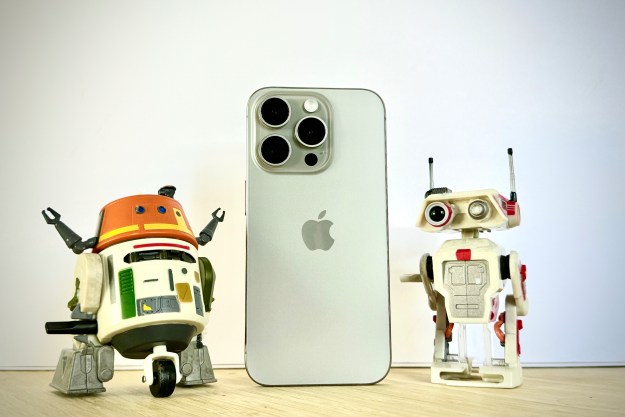When voice control works, it’s hugely satisfying and often, a real time saver. But when it doesn’t work, it’s hugely frustrating. And, until now, we haven’t found a voice control system that actually works. ZTE wants to become the master of all things voice activated, and has partnered up with firms including Audience and Nuance to create a new, ultimate voice control system. It makes its debut on the Star 2 smartphone, and we got a chance to try it out.
It works. Really, really well. ZTE hasn’t given it a fancy name, or any quirky character traits like Siri. Instead it’s put all its effort on on accuracy and speed to make it standout. A long press on the Home button wakes up the assistant, and it responds to a variety of commands. You can open apps, play music, toggle Wi-Fi, activate the camera, and even swap between front and rear camera lenses using your voice. You can program in your own phrases to open custom apps, too. Raise the phone to your head, and the assistant automatically asks you who to call. It’s even possible to unlock the phone using a pre-set command, and the Star 2 recognises your voice.
Hands on video
Voice control without an Internet connection
Live demos of this type of feature rarely work every time, but the Star 2 didn’t miss a beat. Not only did it understand, but it responded instantly, and all without an Internet connection. This means you can’t go outside of the system’s pre-programmed commands to search the Web, or ask how tall your favorite celebrity is, but we’ll sacrifice that for a system which actually understands what we’re asking, even in a reception dead zone. Voice control isn’t new, but voice control that actually does what you tell it to do is a complete revelation.
Although ZTE says it’ll operate happily in noisy environments, we couldn’t test the claim out in the quiet hotel room where we used the Star 2. When the Star 2 was announced, we were concerned whether it would respond well to English voice commands, given it was only confirmed for launch in China. We tried it out with both American and British accents, male and female, without issue.
- 1. Photo credit: Digital Trends/Andy Boxall
- 2. Photo credit: Digital Trends/Andy Boxall
Luckily, the Star 2 is a desirable phone outside of its voice commands. The slim metal chassis makes it feel expensive and well-built, and it’s surprisingly light. It’s also comfortable to hold. While the Snapdragon 801 processor isn’t the newest on the market, it’s powerful and energy efficient. The 13-megapixel rear camera and wide-angle 5-megapixel front cam don’t break new ground, but match most other high-end smartphones available.
It’s the voice controls which set the Star 2 apart though, and ZTE has big plans for it in the future. Earlier in 2014, it set up the Smart Voice Alliance to create a standard voice control platform for use in mobile devices. Judging by the Star 2’s winning performance, it’s off to a very positive start.
No global release plans yet
After we got all excited about the Star 2, ZTE dampened our enthusiasm by pulling an all-too-familiar trick. There’s no U.S. or global release confirmation for the Star 2 yet. We were told it wants to release the Star 2 outside China, but had nothing to share about when (or if) it would happen. ZTE’s making a lot of noise about becoming a major player in the United States, and the Star 2 would, from our biased view, do a far better job at increasing recognition than partnering with sports teams.
It’s a shame, but if we shout about it loud enough, maybe ZTE will listen to our pleas as well as the Star 2’s voice assistant hears our commands.
Highs
- Voice control that consistently works well
- Premium metal chassis
- Lightweight
Lows
- No global release date






